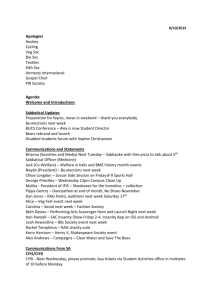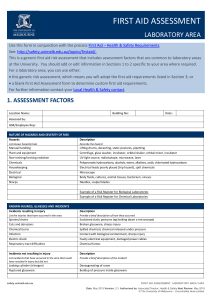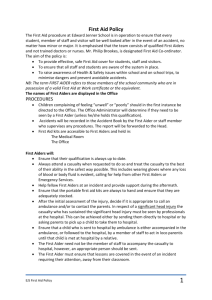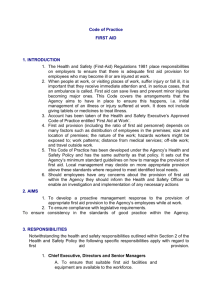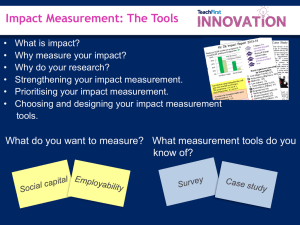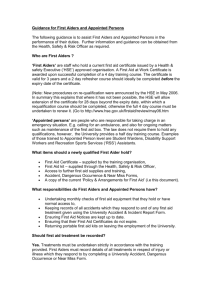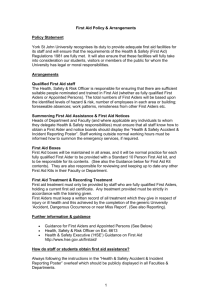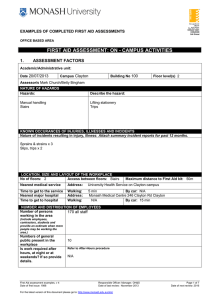FIRST AID ASSESSMENT TOOL - (office based areas) No of employees
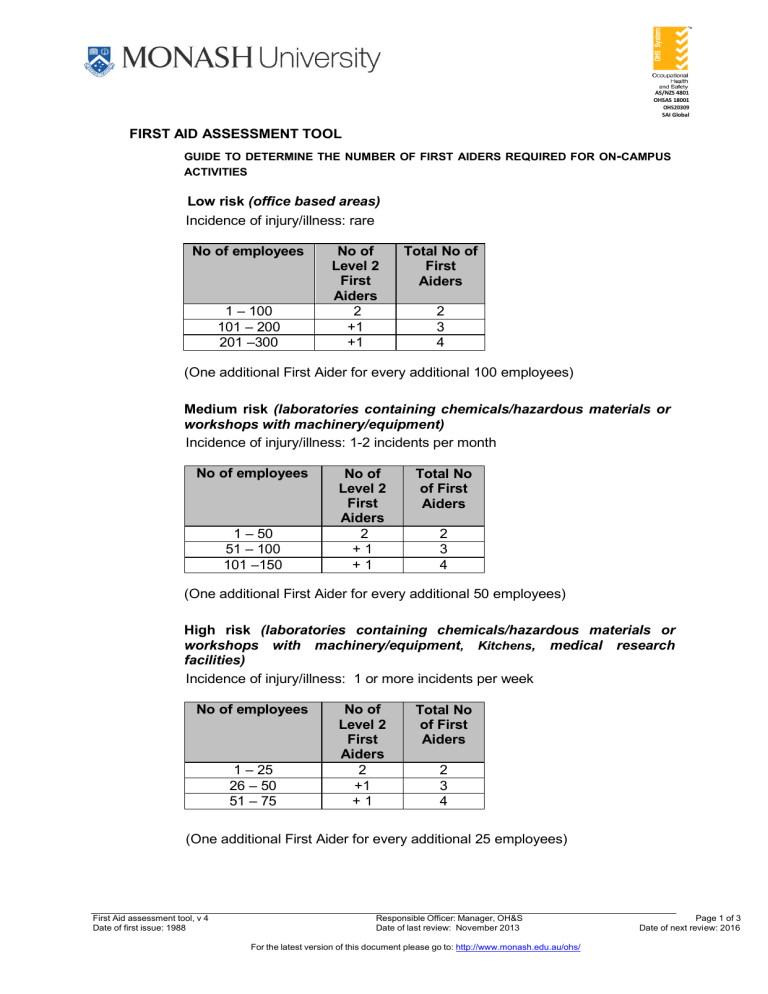
AS/NZS 4801
OHSAS 18001
OHS20309
SAI Global
FIRST AID ASSESSMENT TOOL
GUIDE TO DETERMINE THE NUMBER OF FIRST AIDERS REQUIRED FOR ON
-
CAMPUS
ACTIVITIES
Low risk (office based areas)
Incidence of injury/illness: rare
No of employees
1 – 100
101 – 200
201 –300
No of
Level 2
First
Aiders
2
+1
+1
Total No of
First
Aiders
2
3
4
(One additional First Aider for every additional 100 employees)
Medium risk (laboratories containing chemicals/hazardous materials or workshops with machinery/equipment)
Incidence of injury/illness: 1-2 incidents per month
No of employees
1 – 50
51 – 100
101 –150
No of
Level 2
First
Aiders
2
+ 1
+ 1
Total No of First
Aiders
2
3
4
(One additional First Aider for every additional 50 employees)
High risk (laboratories containing chemicals/hazardous materials or workshops with machinery/equipment , Kitchens , medical research facilities)
Incidence of injury/illness: 1 or more incidents per week
No of employees
1 – 25
26 – 50
51 – 75
No of
Level 2
First
Aiders
2
+1
+ 1
Total No of First
Aiders
2
3
4
(One additional First Aider for every additional 25 employees)
First Aid assessment tool, v 4
Date of first issue: 1988
Responsible Officer: Manager, OH&S
Date of last review: November 2013
For the latest version of this document please go to: http://www.monash.edu.au/ohs/
Page 1 of 3
Date of next review: 2016
GUIDE TO DETERMINE THE MINIMUM NUMBER OF FIRST AIDERS REQUIRED FOR
OFF CAMPUS ACTIVITIES
Off-campus activities in urban areas
Low risk : at least one Level 2 First Aider
High risk : as per off-campus activities in rural areas
Off-campus activities in rural areas
No of persons
1 – 15
16– 29
30 – 39
No of
Level 2
First
Aiders
1 - 2
2
+ 1
Total No of First
Aiders
1 – 2
2
3
(One additional person, trained in Level 2 First Aid or higher, for up to every additional 10 people).
Off-campus activities in remote areas
No of persons
1 – 15
16 – 30
31 – 40
No of
Level 2
First
Aiders
N/A
+ 1
+2
No of
Remote area First
Aiders
2
2
2
Total
No of
First
Aiders
2
3
4
(One additional person, trained in Level 2 First Aid or higher, for up to every additional 10 people).
•
It may be necessary to alter the number and level of qualification of the First Aiders required, dependent on the outcome of the First Aid assessment.
•
Whenever practical, First Aiders should not travel in the same vehicle.
•
It is recommended that at least one person trained in Mental Health
First Aid or an equivalent course attends rural/remote off-campus activities. Information about Mental Health First Aid courses is provided on the SDU web site .
First Aid assessment tool, v 4
Date of first issue: 1988
Responsible Officer: Manager, OH&S
Date of last review: November 2013
For the latest version of this document please go to: http://www.monash.edu.au/ohs/
Page 2 of 3
Date of next review: 2016
OTHER FACTORS TO BE TAKEN INTO CONSIDERATION
FACTORS WHICH COULD INCREASE THE
NUMBERS OF FIRST AIDERS REQUIRED
No of incidents (past year)
Increased number of incidents may indicate need for more First Aiders or a change in risk category level.
(Check Hazard & Incident reports)
Number of persons routinely present in workplace
Consider staff, students, contractors, visitors, members of public.
Open days/conferences may need extra
First Aid cover (contact OH&S ).
Spread of hours
Look at work/study after hours/at night/at weekends. Plan to cover all times.
Layout of building(s)
Look at the time it takes to get a First Aider to a casualty. It is often a good idea to mark up a floor plan with the location of the First
Aider and look for gaps.
High risk multi-story buildings may need a
First Aider on every floor.
Scattered work buildings may need a First
Aider in each building.
Hazards/health concerns
First Aiders should be located where there is a significant risk of injury/illness. Where a workplace stores or uses highly toxic chemicals, etc. additional First Aid facilities may be required.
Time to medical aid
As the length of time increases to get medical aid e.g. doctor or hospital, look at increasing the number and level of training of the First Aider.
FACTORS WHICH COULD DECREASE THE
NUMBERS OF FIRST AIDERS REQUIRED
Decrease in number of incidents.
Security staff are also trained First Aiders.
Low risk office buildings may only need a
First Aider on every second floor.
If you have immediate access to a
Medical clinic or hospital emergency room, the number of First Aiders may be able to be reduced. The hours that the service is available should be taken into account when
First Aid requirements are being calculated.
Availability of First Aiders
Extra numbers of First Aiders may be required when staff are part-time or not always located on a campus.
Allowances must also be made for absences due to leave or other reasons.
First Aid assessment tool, v 4
Date of first issue: 1988
Responsible Officer: Manager, OH&S
Date of last review: November 2013
For the latest version of this document please go to: http://www.monash.edu.au/ohs/
Page 3 of 3
Date of next review: 2016
